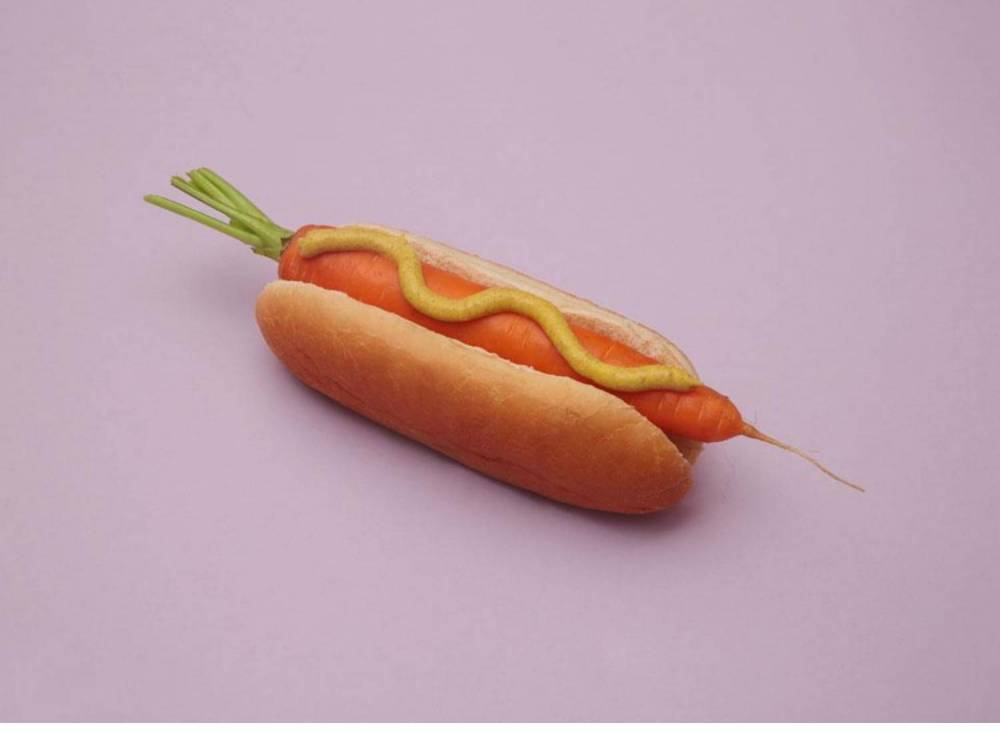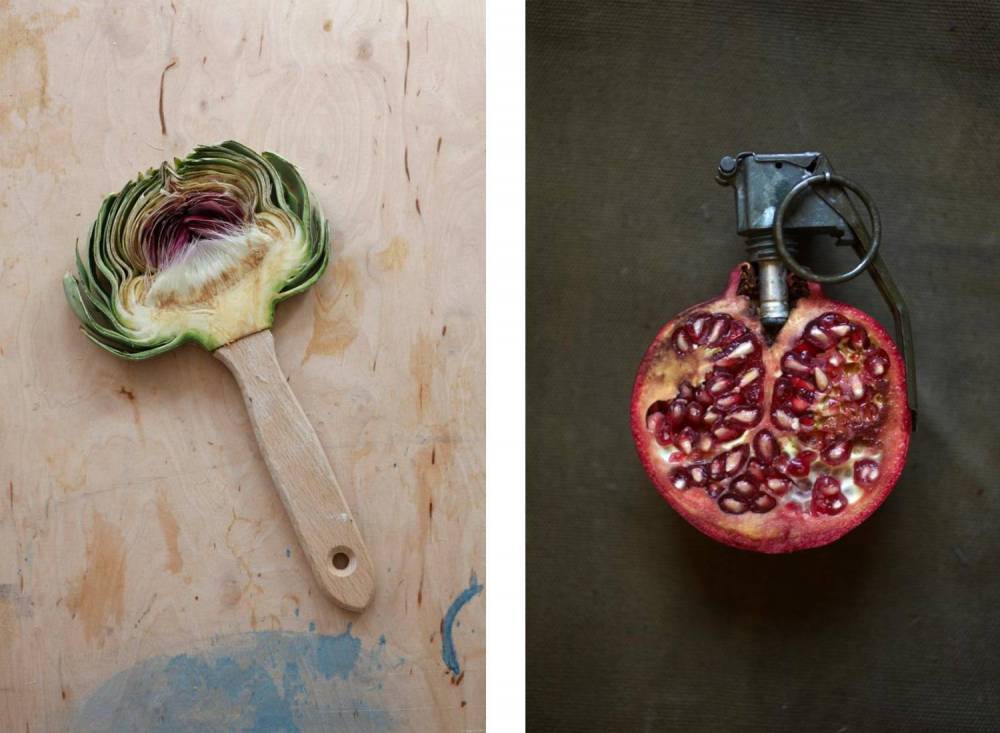Speaking your creative mind with Sarah Illenberger – Interview featured by #jungbleiben
Sarah Illenberger gives new meaning to everyday objects. As an artist, illustrator, and designer, she explores areas that cannot be defined by a common job title. In our interview for #jungbleiben magazine, she tells us why Italians allow more creative freedom than Germans.

You are known for your extraordinary ideas. How do you keep track of them?
I have many sketchbooks. I always need that moment when the pencil touches paper. When I work for clients, I create collages in InDesign. Using Google Image Search, I can make pretty accurate collages that don’t really deviate much from the sketch. This way, I can plan my shopping so I don’t buy too many things.
You work with various materials. Do you try to work sustainably?
I already work a lot with fruit and vegetables – I eat them afterward or put them in a vase. I also have a material archive for plastic materials where I stock things and reuse them as often as possible. In recent years, however, I have switched to natural materials, not only because they are more fun, but because they are more unpredictable. I also notice changes in clients being more concerned about recyclable materials.

When McDonald’s wanted to book you, you refused under the motto “stick to your values”. Which values are important to you?
It is important to me that the production is clean and that there is an ethical idea behind it. I definitely could not represent Mcdonald’s, especially after I just criticized deforestation in my work. I don’t want to have to contradict myself just to get off well financially. I once agreed to work for Nike and I created something I like. You can’t always be 100 percent consistent, but in order to make a difference, you have to set standards for clients.
Your visual language often combines different items. Where else in life would this way of thinking be useful?
It would be nice if people in my world-respected that you can do many different things and be equally good at them. I wish being versatile was more accepted in Germany. Variety always creates new approaches and fresh ideas. I think it’s alright to find different colors and forms to express yourself. In Germany, this is above all a security concept. If you put something into a box, it can be controlled. In other countries that is more accepted. Back in the Renaissance, people like Da Vinci were admired for their genius in various fields.

Where does that come from, especially in Germany?
I think Germans are such safety-loving people who love making rules. Maybe it’s historically related to the fact that our society was absolutely shattered, very unsettled by the consequences of the Second World War and therefore somehow more fearful. We tend to find it very difficult to treat others. In contrast to America, where people push or support each other. In Germany, we’re rather critical and skeptical, under the motto “don’t let people go big”. I take it easy in my small studio in Italy, where the artistic process is somehow more appreciated.
Speaking of Italy. What was it like during Corona without any travel?
It was a challenge, but limitation is the mother of invention. Suddenly everything was calm and quiet, the eyes were clearer and more curious. I was taking pictures and building objects using things I collected in the streets of Berlin. In the process, a whole collection of objects came into being. The process of building objects distracted me well and was my way of processing uncertainty.
Do you google something to see if it’s been done before?
Yes, of course. Especially since I try to involve temporal relevance, it’s not impossible that someone else somewhere is dealing with the same topic. Sometimes I google directly to make sure that it hasn’t already been prominently presented or published somewhere. In that case, I let it go right away, otherwise, it’s no fun anymore.

Being copied is a good sign. How come?
You have to look at it in a positive way, otherwise, you despair, because it is difficult to get compensation. When I think how many times this melon has been copied. You just have to try and be quicker and come up with a new idea in the same order of magnitude.
Do you think your way of seeing things can be learned?
Yes, I can see that in my daughter. She is eight years old, and she often says “Mommy, this looks like this, or this could be that”. She is a good assistant. But as soon as you learn that, it becomes predictable. It’s exciting when it really comes into being spontaneous when two elements combine and trigger that brief ignition moment. For this, you always have to go through life attentively. Sometimes you are lucky, sometimes nothing happens for a long time. It’s a bit like watching shooting stars in the sky.

You studied graphic design. How did your visual language turn into what it is today?
During my studies, I realized that I wanted to work using my hands. However, there was no field for what I do, so illustration was the closest thing to it. Then I realized that I draw the most inspiration from everyday culture. My best source of inspiration and material are the obvious things surrounding all of us. At that time, a kind of movement arose, fueled by the gestalten magazine, and suddenly new concepts such as tactile design or tangible design appeared on the market. The English were ahead of the game and realized that you can combine illustration with scenic design and that you don’t just have to create it, you get to have the idea.
Sometimes you have to see something in order to know that you can actually do it.
Absolutely. That was the case for me in London with independent magazines like Dazed&Confused and in Germany with SZ Magazin, which combines journalism with visual storytelling. In their supplements you sometimes had 10 pages for a photo series.
Which other areas would you like to explore in the future?
In general, I would like to achieve stability in working freely and without commissions. I have been selling my work in my online-shop for 10 years and now I am increasingly selling the originals. Artistic work plays an increasingly important role. This is associated with more risk, because you have to pre-finance everything and structure yourself more strongly. At the moment I’m dealing with language and poetry, and I’ve noticed that my work is often like a little poem, so I’m looking at how to express your own thoughts in a more nuanced way without being too bold.
Illustration by Daniel Triendl
In friendly cooperation with www.jungbleiben.com